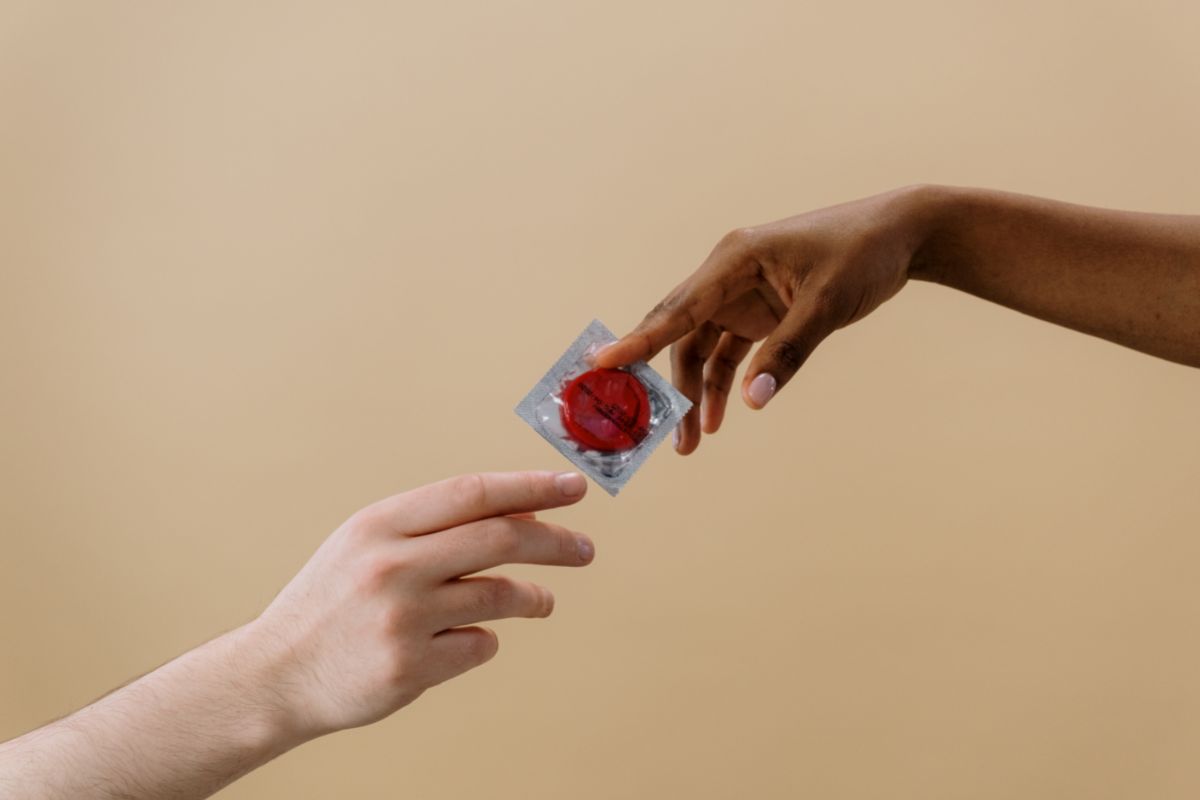Human Immunodeficiency Virus, otherwise known as HIV, is a sexually transmitted virus that can typically be prevented by adopting appropriate sexual health barrier methods that include using dental damns and condoms.
This is because HIV can only be transmitted through the specific exchange of bodily fluids, as opposed to skin to skin contact.
![Do Condoms Always Prevent HIV Transmission? [Everything You Need To Know]](https://alphanutrition.com/wp-content/uploads/2022/08/Do-Condoms-Always-Prevent-HIV-Transmission-Everything-You-Need-To-Know.jpg)
HIV is far easier to prevent when compared to viruses like herpes that are transmitted by skin-to-skin contact.
Pre-exposure prophylaxis can also help to reduce the rate of transmission in regard to HIV.
This article will outline how HIV can be transmitted, and the ways in which condoms can be used in order to prevent the transmission of HIV.
It will also outline how to use condoms in the correct manner to prevent transmission.
How Is HIV Transmitted?
HIV is transferred from person-to-person via the exchange of bodily fluids.
If fluids that contain HIV enter the body via the eyes, rectum, or vagina, then this can lead to the transmission of HIV infection.
Bodily fluids that can contain enough of the virus to result in transmission include the following:
- Semen
- Blood
- Vaginal Secretions
- Rectal Secretions
- Breast Milk.
The transmission of these bodily fluids usually occurs during sex.
Although HIV can also be transferred through the sharing of needles, and other forms of drug paraphernalia.
Those working in environments where they are exposed to the secretion of blood and other fluids can also be at risk of infection.
However, there have been universal precautions implemented across the United States in order to prevent the transmission of HIV within various healthcare settings.
How Can Using Condoms Prevent HIV?
Using condoms helps to prevent the transmission of HIV through the blockage of infectious bodily fluids.
External condoms contain semen and pre-cum, and prevent it from entering into their sexual partner during the act of intercourse.
Internal condoms, otherwise known as female condoms, can also prevent the vagina from receiving semen and pre-cum that can lead to infections.
It is important to note that only polyisoprene, polyurethane, and latex condoms have been proven to be able to prevent HIV transmission, alongside other forms of sexually transmitted diseases.
This is because using lambskin condoms may result in infection, largely due to them containing pores that are big enough to allow a certain amount of infection to seep through.
Thus, these condoms should only be used by couples who have tested negative for HIV and other STIs.
When Should I Use A Condom?
A condom should always be used to drastically reduce the risk of transmitting the HIV virus, alongside other forms of STIs.
Thus, condoms should be used for any form of sexual intercourse or activity.
The only exemption is for those couples who have tested negative for HIV and other STDs, and who are only sexually active with one another.
Anal Sex

If one of the consenting individuals has HIV, then unprotected anal sex carries a risk of transmitting HIV.
This is because the tissue contained within the rectum is highly susceptible to HIV, and semen can contain high concentrations of the virus.
Therefore, it is important to correctly use a condom in order to prevent HIV transmission from occurring during anal sex.
This helps to reduce the risk of transmission by up to 70%. However, it does not eradicate the risk of transmission entirely.
Vaginal Sex
Across the world, vaginal intercourse is one of the leading sources of HIV transmission.
Vaginal intercourse is more risky for the individual who is being penetrated. However, vaginal secretions can also contain HIV.
Thus, the transmission of the virus can occur both ways.
Thus, it is crucial that you consistently use a condom correctly when engaging in vaginal sex.
Alongside a silicone-based lubricant, as this will drastically reduce the chances of transmission.
Researchers have stated that consistently using a condom provides up to 80% protection against transmission during vaginal intercourse.
There is also evidence to suggest that up to 95% protection is possible for those who use condoms correctly during every sexual act.
Oral Sex
Whilst it is entirely possible for HIV to be transmitted during oral sex, this is not one of the main sources of transmission.
Oral sex includes fellatio, cunnilingus, and rimming.
The factors that could enhance the risk of transmission during oral sex include the amount of HIV contained in the semen of the individual who is receiving oral sex.
This is otherwise known as the viral load, and this is the amount of virus that is contained in the bodily secretions of the infected individual.
Thus, using condoms and dental dams for oral sex can prevent the risk of transmitting HIV infection drastically.
However, they do not decrease the risk of transmitting other sexually transmitted diseases that are transmitted via skin-to-skin contact.
Conclusion
To conclude, using condoms prevents the likelihood of transmitting HIV to a large extent.
This is because HIV is transmitted through the bodily fluids of the infected individual.
Therefore, while the risk of transmission is not reduced entirely, using a condom is the safest way to ensure that you do not take risks when engaging in sexual intercourse.
Using a condom during anal sex has been proven to reduce the risk of transmission by up to 70%, and this protection increases by up to 80% when engaging in vaginal intercourse.
It is also recommended that you use a condom during oral sex, or a dental dam.
Despite the fact that HIV is not transmitted as commonly through oral sex, there is still a chance that the infection can be transferred during oral sex.
This depends on the viral load of the individual who is receiving oral sex.
Overall, using a condom is the safest way to ensure that you reduce the risk of transmitting HIV to your sexual partners.
- Understanding Male Reproductive Health: A Complete Guide - February 2, 2025
- Simple Healthy Skin Habits for Radiant Skin - December 6, 2024
- Unlocking the Connection Between Nutrition and Mental Health - December 3, 2024






![Prenatal HIV Transmission What Is Perinatal Hiv And When Does It Occur? [Explained]](https://alphanutrition.com/wp-content/uploads/2022/08/What-Is-Perinatal-Hiv-And-When-Does-It-Occur-Explained-150x150.jpg)

